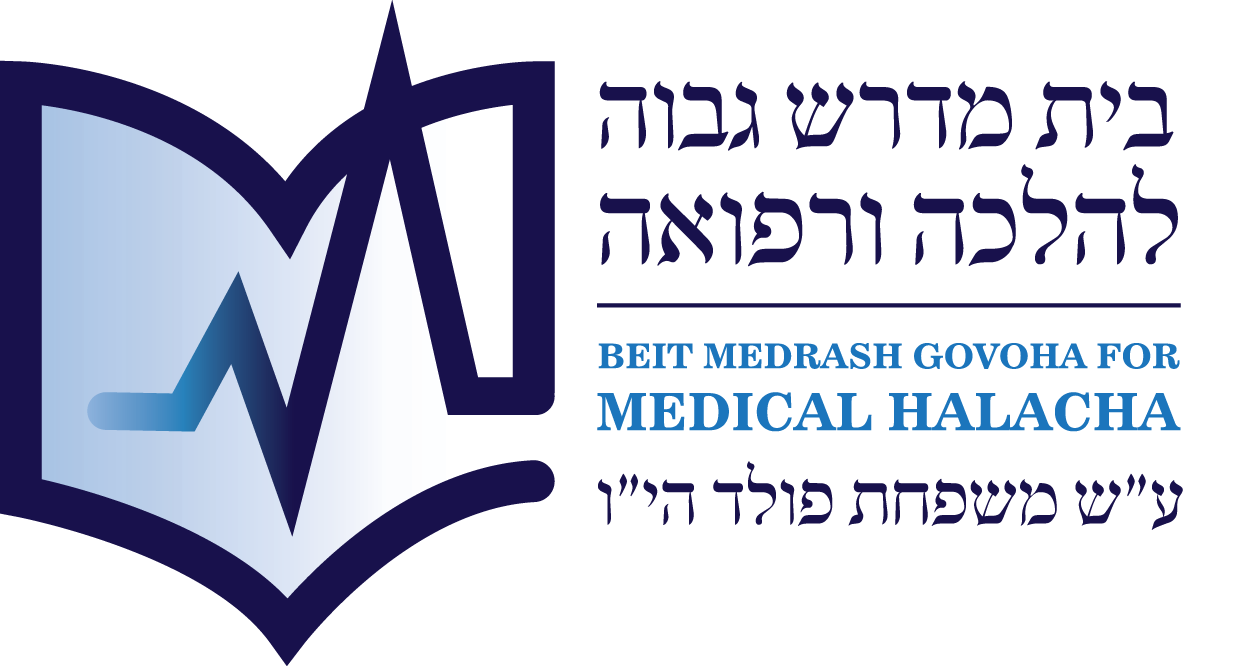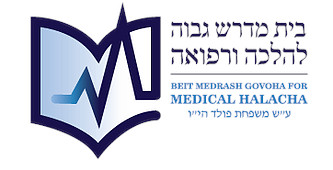The effects of new medical discoveries and technologies on established Halachic principles have generated extensive debate. In certain areas, such as determining paternity or maternity through genetic testing, significant disputes remain among the Poskim. In more straightforward matters, however, the prevailing tendency of the Poskim is to accept the findings of tests and medical discoveries made possible through novel technology and research, along with their associated Halachic implication.
One particularly challenging example involves determining the gestational age of stillborn infants, which is necessary to establish whether the laws of mourning apply. The Halacha, as stated in the Shulchan Aruch (Y.D. 374:8), is:
A baby – for thirty days, with the thirtieth day included – one does not mourn for him, even if his hair and nails were fully formed; from then on one does mourn for him, unless it is known that he was an eight-month baby. And if it is certain that his [gestational] months were completed – for example, if a man had relations with his wife and then separated from her, and she gave birth to a live [infant] after nine full months – even if he died on the day he was born, one mourns for him.
That is to say: a child is considered Bar Kayama (viable) and subject to the laws of mourning only if he was born after a definite nine whole months of gestation. If such a child passes away, Rachmana Litzlan, Aveilus is observed. However, if there is uncertainty about the length of gestation, the laws of mourning apply only if the child lives for thirty days. If he does not survive this period, he is classified as a Neifel (non-viable) and no Aveilus is observed.
The Shulchan Aruch emphasizes that absolute certainty of a nine-month gestation is possible only in the extreme case in which the parents separated from each other immediately after cohabitation and the child is born nine full months later. In any other situation where there is doubt about the time of conception, and thus whether the child was born prematurely, the child is considered a Neifel, and Aveilus is not observed.
In our time, however, there are two reasons to practice Aveilus even if the conditions laid out by the Shulchan Aruch are not met:
- Even if a baby is born with less than nine months of gestation, the status of a premature infant today differs significantly from in the time of Chaza”l, as neonatal care has advanced dramatically, and even extremely premature babies can survive and go on to live healthy lives. Accordingly, Halacha mandates Chillul Shabbos to treat premature infants, even those who would have been deemed non-viable in the past.
In a previous essay[1], we examined in detail whether this is because “nature has changed,” as the Chazon Ish suggests, or because of the innovation of incubators. Regardless, the halachic status of premature infants has changed, and they cannot be treated as presumptively non-viable. Consequently, R’ Elyashiv zt”l ruled that, in general, one should mourn for a premature infant, assuming that with proper treatment the child would have survived. The exception to this ruling occurs when the infant dies despite neonatal intensive care interventions, indicating that the infant had a fatal defect and should be considered a T’reifa who is given the halachic status of a Neifel, and no Aveilus is observed.
- Today, even if the couple has not been abstinent, it is possible to accurately determine gestational age using modern diagnostic techniques. These findings may be relied upon to establish that a baby was born at term and that Aveilus is required.
There is an interesting discussion among the Poskim regarding a baby whose gestational age is uncertain. The Shulchan Aruch rules that the matter depends on whether the child survived for thirty days. What is the Halacha if the child survives in an incubator and then dies after thirty days?
The issue centers on how we evaluate the neonate’s survival under such artificial conditions. An incubator replicates pregnancy in several critical respects, including temperature control, humidity regulation, and minimal stimulation. Essentially, the child’s survival has not been demonstrated under normal extrauterine conditions, which constitutes the traditional criterion for determining whether a child is Bar Kayama or a Neifel. Conversely, the fact remains that he survived for thirty days outside his mother’s womb.
To resolve this question, we must first consider the status of a baby who did not require an incubator but was so ill that he barely survived thirty days and then died shortly thereafter. The Maharam[2] (Shu”t 67), maintains that if a child and was continuously ill and progressively deteriorated, “the facts prove that he was not Bar Kayama,” and therefore no mourning is observed for him, even though he survived more than thirty days. Accordingly, R’ Shmuel Wosner zt”l (1913-2015)ruled that where it is certain that the infant could not have survived outside of an incubator and would have died if removed prematurely, he is considered a Neifel and no Aveilus is observed.
He explains (Shevet HaLevi 3:143) that although the Maharam only ruled leniently in combination with other factors, this was for an ordinary sick infant:
But incubator babies, whom we know with near certainty would not survive even a few days if they are not placed in this device, from the outset they were born as definite Nefalim without the natural ability to survive in the world. Only a small number of these infants turn out to be Bnei Kayama. In the case at hand, where as soon as they are removed from the incubator, they die after a few days, it is obvious that they remain in the category of definite Nefalim.[3]
Rav Wosner’s reasoning appears straightforward: since the thirty-day period determines whether a baby is viable, and here it is evident the child is not, its status remains that of a Neifel. Nevertheless, this conclusion is striking since the baby did survive more than thirty days outside the womb. This point is brought further to light by R’ Shlomo Zalman Auerbach zt”l (1910-1995).In Minchas Shlomo 2:99, after explaining that Shabbos should be desecrated to save an eight-month baby (whom Chazal ruled does not warrant Chillul Shabbos) if he can be sustained in an incubator, he adds:
On the contrary, regarding an eight-month baby who lived in an incubator for more than thirty days, I believe that since the pregnancy was certainly incomplete, and the warmth inside the incubator is akin to completing the pregnancy (see Chasam Sofer E.H. 2:69), we may conclude that even if it died after thirty days, it turns out that the incubator evidently did not complete the pregnancy, and it should be regarded as an eight-month baby for whom no mourning is observed. Nevertheless, I do not question the stringent practice in this matter.
In other words, R’ Shlomo Zalman introduces the novel idea of considering a baby in an incubator as not yet “born” Halachically, and that we view the incubator as continuing (and completing) the pregnancy. This “continuation of pregnancy” can be considered successful only in retrospect if the child survives outside the incubator. If the baby dies, even after more than thirty days post-delivery, and even if the post-conceptual age is greater than nine months, including the time in the incubator, we consider this to be an incomplete pregnancy, and the child has the status of a Neifel.
Nevertheless, at the end of the Teshuva, R’ Shlomo Zalman notes that although this reasoning is sound, the prevailing custom is to be stringent – that is, to practice Aveilus – and he did not wish to challenge the custom.
Beyond this being the prevailing custom, as R’ Shlomo Zalman mentioned, R’ Elyashiv zt”l held that there is a definite obligation of Aveilus for such a baby. As recorded in Toras haYoledes (p. 287), he disagreed fundamentally with R’ Shlomo Zalman’s premise, as R’ Yitzchak Zilberstein shlit”a relates:
We heard from R’ Elyashiv zt”l that we count thirty days from the birth of a premature infant, and his stay in the incubator is not considered a continuation of pregnancy, but merely an adjunct to his medical treatment. Even if his deterioration was apparent, Aveilus should be observed if he died after thirty days…
That is, just as an ill baby who requires life-saving medication but survives more than thirty days after birth is not considered a Neifel but a Bar Kayama, the same applies to an incubator: according to R’ Elyashiv, it is comparable to other medical treatments.
Therefore, the fact that the baby’s survival depended on such a device does not indicate non-viability; instead, he is deemed viable because of the incubator, as evidenced by his thirty-day survival. In contrast, R’ Shlomo Zalman viewed the incubator as a continuation of pregnancy, and if the baby cannot survive outside it, the pregnancy was incomplete, and he is considered to have been born prematurely.
[1] “Tiny Beginnings”, Pekudei 5784
[2] R’ Meir b. Baruch m’Rottenberg (c.1215-1293).
[3] Rav Wosner also goes on to discuss the defects that are common among premature infants, and their Halachic ramifications.











Add comment